NEWS
Panasonic Toyota Racing starts 2009 with world premiere15.01.2009
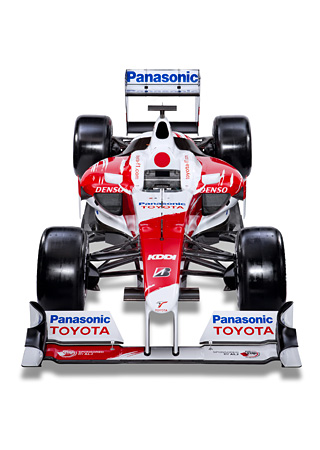
Panasonic Toyota Racing officially began the 2009 Formula 1 season in cyberspace today with the world premiere of the team’s latest car, the TF109.
The team’s eighth season in Formula 1 sees major rule changes so the TF109, revealed exclusively on www.tf109-premiere.com, looked considerably different to its predecessor, featuring wider front wings and narrower rear wings among other modifications.
Today’s world premiere completed an exhaustive development process which began in October 2007, when the 2009 regulations were confirmed. The TF109 begins pre-season testing on 19 January at Algarve Motor Park in Portugal.
Despite the TF109’s fundamentally different appearance, Panasonic Toyota Racing’s ambitious goals remain, as Chairman and Team Principal Tadashi Yamashina states: “Our target this year is to fight to win the first race for Toyota in Formula 1.”
The significant progress shown in 2008, when the team hit its targets of returning to the podium and significantly increasing its points total, has bred confidence.
Panasonic Toyota Racing achieved two podiums, one front row start and, with 56, scored more points than in 2006 (35pts) and 2007 (13pts) combined. A Toyota was in the top 10 on the starting grid for 14 of the 18 Grands Prix, finishing in the points 12 times, with nine top-six finishes.
President John Howett says: “We have gained a huge amount of knowledge and improved considerably. There are many elements of our team which are at the very highest level so the challenge now is to fill any gaps and ensure the entire organisation is performing at the very top. Then we must put all the elements together and deliver the success we are all fighting so hard for.”
The Driving Force
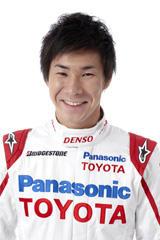
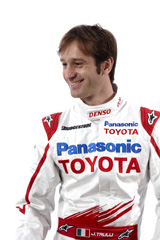
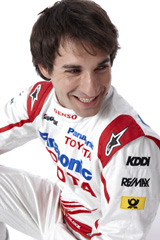
After consistent and competitive performances in 2008, Jarno Trulli and Timo Glock will continue behind the wheel, joined again by third driver Kamui Kobayashi, who will also race in GP2 Asia and the GP2 Series.
Tadashi Yamashina comments: “In my opinion Toyota has one of the best driver line-ups in Formula 1 and I am excited to see what they can do with the TF109. Both drivers proved last season that if we give them a competitive car they are capable of fighting with the best in the world, so our challenge this year is to deliver a car which will allow them to do this more often.”
Jarno is preparing for his fifth full season as a Panasonic Toyota Racing driver and his experience has proved invaluable in the team’s development, while Timo’s natural speed and enthusiasm are the perfect compliment.
Jarno, who has achieved four of the team’s eight podiums so far, is entering his 13th season in Formula 1 and his legendary passion for motorsport remains undimmed.
“I still have plenty I want to achieve in Formula 1 but my dream now is to win the first race for Toyota,” the 34-year-old Italian says. “I have now spent longer racing for Toyota in Formula 1 than any other driver and I have seen the huge progress that has been made since I joined in 2004. It has been a long journey and we have had ups and downs but we have never given up or lost faith. It was fantastic to be back on the podium last year, as well as leading several races, and my target is to enjoy more of those moments.”
Timo broke into the top 10 in the Drivers’ Championship in his first full season of Formula 1 racing in 2008, quickly adapting to his new team and equalling the team’s best-ever result by finishing second in the Hungarian Grand Prix.
Despite being only 22 Grands Prix into his career, Timo has shown maturity and excellent technical feedback, leaving him confident of thriving in Formula 1’s new era of lower downforce, slick tyres and adjustable front wings.
The 26-year-old German says: “If you look back at the cars I have been racing for the last five years they have all been quite different, with the 2004 Jordan, then Champ Car, GP2 and the Toyota TF108, and I have been competitive in each of them. That shows how quickly I can adapt to a different car so I don’t have any concerns at all about adjusting to the 2009-style Formula 1 cars. I am sure the other drivers will adapt quickly as well but I certainly expect to hit the ground running.”
For Toyota Young Drivers Programme star Kamui, this is his second season with the team and he will continue his motorsport education by fighting for wins in the GP2 Series while also helping Panasonic Toyota Racing tackle the new regulations.
“I’m really pleased to be continuing with the team and I’m looking forward to the challenge of developing the TF109,” said the 22-year-old Japanese. “It will be another busy season for me with GP2 and F1 development but I am young and I love driving racing cars so it’s no problem. I will fight all the way this year, never giving up and always giving everything I can.”
The Shape of Things to Come
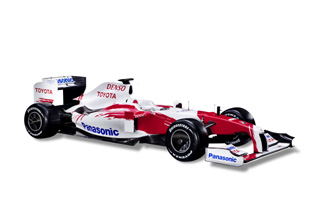
The new chassis regulations facing Jarno, Timo and Kamui are motivated by three factors: to make overtaking easier; to limit the continual increase in average speeds and to make the cars’ appearance cleaner.
The visual differences are significant, particularly the front and rear wings. At 1800mm, front wings are wider and 75mm lower while rear wings are 75% narrower at 750mm. As well as reducing downforce and speeds, these changes aim to increase a driver’s chance to overtake the car in front.
Such a transition gave Panasonic Toyota Racing engineers a clean sheet of paper for the TF109 design, with relatively few concepts carried over from previous cars. Using proven Toyota Way principles, the challenge has been addressed methodically and enthusiastically.
Senior General Manager Chassis Pascal Vasselon says: “We have worked to the maximum of our capabilities as we always do but this time it had to be special because the rule changes were so big that we had to reconsider everything. So this complete programme has been more demanding on our company than any previous new car project I have been involved in.”
Another change this year sees the return of Bridgestone Potenza slick tyres after a 12-year absence, increasing grip levels and potentially making overtaking easier.
Pascal Vasselon explains: “If you are following another car closely you lose a lot of aerodynamic performance and that makes it extraordinarily difficult to overtake. So to promote overtaking it is necessary to reduce the reliance on aerodynamic grip, because it is inconsistent, and that is where slick tyres come in, by increasing mechanical grip.”
Power Points
But it was not only the chassis department who had to adapt to new regulations, with significant modifications in engine rules for 2009 as well.
The engine department has a new look for 2009 following the departure of Senior General Manager Engine Luca Marmorini. Luca made a fantastic contribution to Toyota since the beginning of the Formula 1 project, including invaluable work on the RVX-09 engine and Kinetic Energy Recovery System projects, but he has chosen to leave the team.
Executive Vice President Yoshiaki Kinoshita continues to hold overall responsibility for both the chassis and the engine departments while Kazuo Takeuchi will become Senior General Manager Engine in addition to his role as Director Technical Coordination Engine.
Engine life has been extended from two to at least three Grand Prix weekends, excluding Friday practice, incorporating a limit of eight engines per driver during the racing season.
That measure not only saves cost, it also creates an additional challenge for the engine department, but the team’s ambitious targets remain. Yoshiaki Kinoshita says: “At Toyota, our approach is always to aim high and last season we achieved our target of 100% engine reliability; we had no race-ending issues. I want the team to have the chance to use the engine in the same aggressive way we did last season, with no compromise on performance or reliability.”
As part of this cost-saving measure, and to assist with reliability, engines will be limited to 18,000rpm; down by 1,000rpm on 2008.
Lean Machine
Cost-saving is high on the Formula 1 agenda and Panasonic Toyota Racing is committed to reducing expenditure while maintaining the sport as the pinnacle of motor racing.
The Formula One Teams’ Association (FOTA) and the International Automobile Federation (FIA) have agreed significant reductions for 2009, including a ban on in-season testing, wind tunnel restrictions and factory closures for six weeks a year.
“These are positive, decisive measures which will significantly reduce costs while retaining the DNA of Formula 1 and that was very important to Toyota,” says John Howett.
But ensuring value for investment does not stop there for Panasonic Toyota Racing, with increased efficiency and a thorough review of all costs providing direct savings at the factory.
John Howett adds: “It is vitally important to have a detailed knowledge of what is driving costs, then you need to be able to prioritise the areas which bring value or performance. A lean company must have a culture of waste reduction and constant improvement.
“Happily, these are all factors which Toyota puts particular emphasis on, even in prosperous economic times, so I am confident we are in good shape.”
So, heading into a fascinating Formula 1 season, Panasonic Toyota Racing is completely committed to success on and off the track. The 2009 season starts with the Australian Grand Prix in Melbourne on 29 March, while the 17th and final race is the inaugural Abu Dhabi Grand Prix on 1 November.
